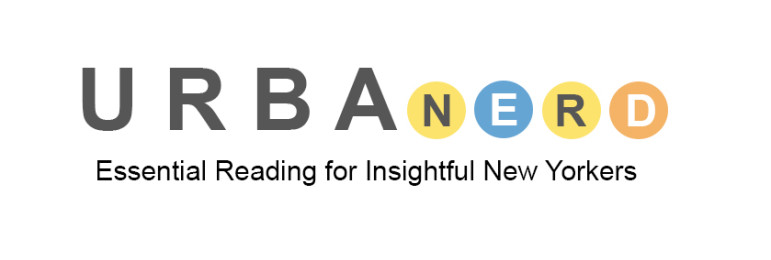
Frederick Joseph
Is the general worry about gentrification misplaced? New research suggests that far from being transformed by hordes of arriving hipsters, most of America’s poorest neighborhoods are still very poor.
CityReports—a Portland, Ore.-based data journalism site—concludes that “the persistence and spread of concentrated poverty–not gentrification–is our biggest urban challenge.”
Their evidence: “Of the 1,100 urban census tracts with high poverty in 1970, 750 still had poverty rates double that of the national average four decades later,” reads the report, which defines “high poverty” as a poverty rate of 30 percent or higher. What’s more, few of those areas saw their poverty rates drop significantly by 2010, and “the number of high-poverty neighborhoods in the core of metropolitan areas has tripled and their population has doubled in the past four decades.”
It’s a different story in New York, right? That’s unclear. In the New York metropolitan area, the number of high-poverty census tracts expanded from 198 in 1970 to 387 in 2010, CityReports says.
One wonders, though, what the story would be in the city itself. The Census-defined New York City metro area includes Bergen, Essex, Hudson, Hunterdon, Middlesex, Monmouth, Morris, Ocean, Passaic, Somerset, Sussex, and Union counties in New Jersey; Bronx, Kings, Nassau, New York, Putnam, Queens, Richmond, Rockland, Suffolk, and Westchester counties in New York and Pike County in Pennsylvania. And since the suburbanization of poverty is part of the gentrification narrative, some of the effects of gentrification might be swallowed amid that huge tract of territory.
There’s no question that there are deeply poor New York neighborhoods untouched by gentrification. And no doubt, a larger failure of the economy to provide a decent standard of living underlies a host of concerns. In other words, worry about poverty and worry about gentrification aren’t mutually exclusive.
But it’s too early to conclude that our local fears of the G-word have been misplaced. Some of the New York City neighborhoods remade by gentrification may not have been high-poverty areas, but middle-class enclaves that had a sizable but not notable community of lower-income families.
And the 1970 to 2010 period examined by CityReports actually encompasses two separate chapters in the narrative of urban transformation: First, in New York and elsewhere, there was the decline of cities in the 1970s, which stretched into the 1980s in many places. Then, for many cities, there was a period of recovery and resurgence in the 1990s and especially after 2000. In other words, looking at the whole 40-year swath might say more about the devastating effect of the 1970s than it does about what has happened since.
But the report is still valuable as a reminder that poverty remains a threat to cities ability to deliver equality and inclusion.
Yes, I mean now.
Then, prove your urbaNERD credentials, and try to name all the subway lines in alphabetical or numeric order. (Did you forget one of the shuttles? Don’t feel bad. It happens to everyone now and then.)
Finally, read these lovely and fascinating things:
What good is a tuition assistance program … if it doesn’t, like, assist people with tuition: “Part-time students now account for 42 percent of those enrolled at SUNY and CUNY community colleges, up from 32 percent in 1980,” writes the Center for an Urban Future in a report out this week called “Tapped Out.” “Yet, in 2013, less than 1 percent of the nearly 150,000 part-time students enrolled at the state’s 36 community colleges received financial aid through the state’s TAP program. At CUNY community colleges, just 91 out of nearly 40,000 part-time students received TAP funds to help pay for school that year.”
This would be front-page New York Post material … if the UFT could somehow be blamed for it: A report by the Center for Popular Democracy finds a startling lack of financial oversight of charter schools. Egregious examples include a school in the Bronx that spent “nearly $70,000 to send 49 staffers on a five-day trip to the Bahamas and 21 staffers on a five day trip to the Dominican Republic, with per-person costs as high as $1,119” and a Harlem school where “a school official kept the school’s petty cash funds in her personal bank account.” The terror over charter schools is sometimes based on a caricature of them and a misunderstanding of the differences within the charter-school world. But if they are in fact “just public schools,” it might be time for slightly more rigorous auditing.
Can a homelessness crisis be brewing … without homeless people? The Institute for Children, Poverty and Homelessness raises alarms about Sunset Park, suggesting in a brief titled “Past the Tipping Point?” that the neighborhood is vulnerable to a surge in homelessness because of growing cost pressures amid persistent low wages. While few homeless families currently in the city’s shelter system are from Sunset Park, ICPH sees signs that displaced families are instead doubling up: “With 23 percent of all rental units in Sunset Park overcrowded in 2012, Sunset Park was the most overcrowded neighborhood of the city’s 59 community districts.” The worry: doubling up never lasts for long.
The kids are alright. Wait, are the kids alright? The Census Bureau offers a cool mapping tool to explore how Americans aged 18 to 34 have changed over the decades.
UrbaNERD is a weekly guide to research and reporting on urban life.








